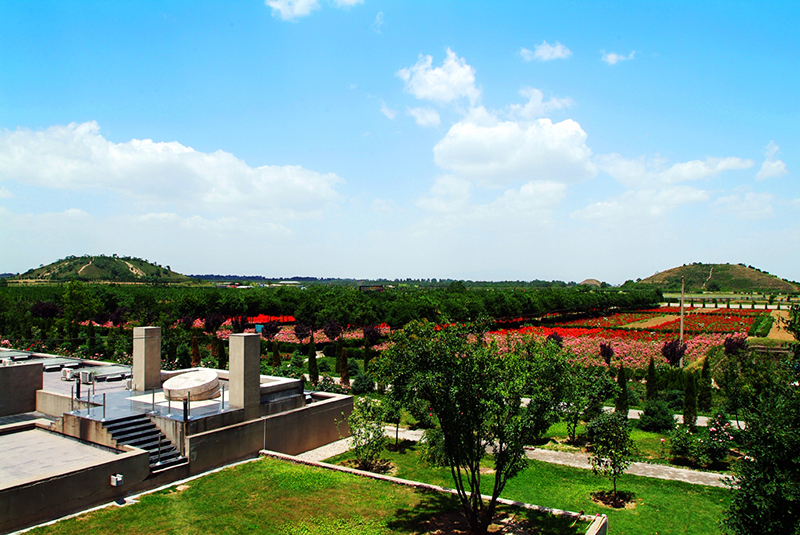

Han Yangling Museum Brief Introduction
Situated near Wei River in the northern suburb of Xi’an city, Han Yangling Museum is an on-the-site one built on the base of Han Yangling Mausoleum, the historical site designated for state protection. Now, the Shaanxi government is planning to build the museum into a scenic spot, which combines historical culture with garden scenery and focuses on the cultural of the Han Dynasty. The museum was opened to the public in 1999 and was awarded as the top national museum in China in 2008.
Emperor Jingdi (188BC—141BC), named Liu Qi, was the fourth Emperor of the Western Han Dynasty. During his 17-year reign, he adhered to the philosophy of Yellow Emperor and Saint Laozi, whose main doctrines were to follow the natural principles. He developed a peaceful relationship with the Huns through intermarriages, and reduced the burden of tax and penalty. Emperor Jingdi, together with his father Emperor Wendi, opened a golden era of harmony in the early feudal society, which was later regarded as “the Great Reign of Wen and Jing”, laying the strong economic foundations for the later territorial expansion wall launched by Emperor Wudi, son of Emperor Wendi.
40 odd years of excavation shows that the Yangling Mausoleum is mainly composed of the Emperor and Empress’ graveyards, southern and northern burial pits, ritual building, the satellite graveyard and criminal’s graveyard, and ancient mausoleum town. To the west of them, lie the emperor and empress’ tomb, northern and southern burial pits and the remains of ancestral construction. The emperor’s tomb is surrounded by 81 burial pits radiating from the centeral mound. A 110-meter wide Sacred Road, flanked by 8000 odd satellite tombs of ancient high officials, leads directly to the ancient mausoleum town. This scene is similar to ancient morning court held by the emperor. Objects unearthed from the 200 odd burial pits include armored Warrior figures with weapon, elegant palace maids with Han costume, countless animals with vivid expressions. The HYLM is considered to represent the ancient burial custom, “ to attend to the dead as if to attend to the living”. HYLM is the most intact royal mausoleum of Han Dynasty ever discovered. It is the most important tangible document in the research of burial customs and civilization of the Han Dynasty.
Profound Han culture, exquisite relics, unique underground museum and pleasant scenery make Han Yangling Museum the most charming and attractive museum both locally and abroad.